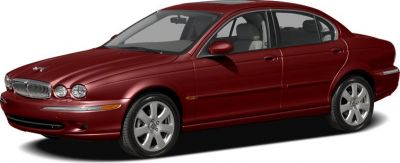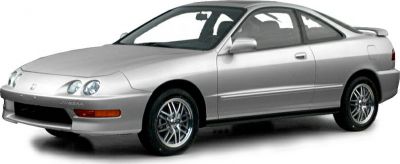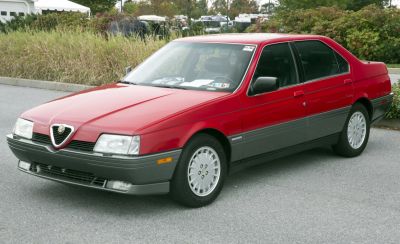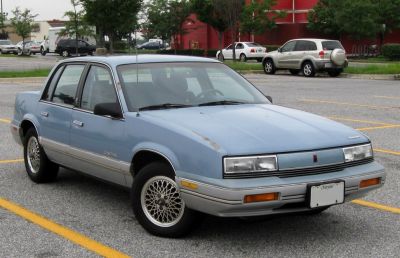 1974 Audi 100 (C1, facelift 1973) Dimensions, Size & Specs
1974 Audi 100 (C1, facelift 1973) Dimensions, Size & SpecsMeasurements of the 1974 Audi 100, engineered for optimal performance and comfort
| Dimensions | |
|---|---|
| Length: | 4600-4635 mm181.1-182.5 in15.1-15.2 ft |
| Width: | 1729 mm68.1 in5.7 ft |
| Height: | 1421 mm55.9 in4.7 ft |
| Trunk Capacity (Max): | 650 liter23.0 cu ft |
| Weight Specifications | |
| Curb Weight: | 1060-1100 kg2337-2425 lbs |
| Maximal permitted Weight: | 1550 kg3417 lbs |
The Audi 100 C1 facelift, produced between 1973 and 1976, represents a classic mid-size sedan from Audi with notable size and practicality for its era. The 1974 model year continues this tradition, with a body length ranging from 4600 to 4635 mm (181.1 to 182.5 inches), providing a balanced yet spacious footprint suitable for comfortable urban and highway driving. At 1729 mm (68.1 inches) wide and 1421 mm (55.9 inches) tall, the sedan offers a stable and aerodynamic profile that blends functionality with the understated elegance typical of early 1970s Audi design.
Weighing between 1060 and 1100 kg (2337 to 2425 lbs) in curb weight, the Audi 100 C1 facelift maintains a nimble yet sturdy presence on the road, supported by a maximum allowable weight of 1550 kg (3417 lbs), which speaks to its capability to handle passengers and cargo efficiently without compromising performance. The sedan delights practicality enthusiasts with its impressive rear seat folding feature, enhancing luggage capacity up to 650 liters (22.9 cubic feet), making it highly versatile for family trips or transporting bulky items.
Overall, the Audi 100 C1 facelift 1973–1976 combines moderate exterior dimensions with a commendable weight balance and superior luggage space, making it a noteworthy model in the history of Audi's mid-size offerings. Its size and weight specifications contribute to its reputation for durability and well-rounded driving dynamics that car aficionados and collectors continue to appreciate.
Discover the standout features that make the 1974 Audi 100 a leader in its class
Have a question? Please check our knowledgebase first.
The Audi 100 (C1 facelift 1973) has an overall length ranging from 4600 mm to 4635 mm (approximately 181.1 to 182.5 inches). Its width measures 1729 mm (about 68.1 inches), and the vehicle height is 1421 mm (approximately 55.9 inches). These dimensions reflect the typical sedan profile of the mid-1970s, offering a well-balanced size suitable for both city and highway driving.
The curb weight of the Audi 100 (C1 facelift 1973) is between 1060 kg and 1100 kg (2337 to 2425 lbs), depending on the specific model and equipment. The vehicle's maximum permissible weight, which includes passengers, cargo, and fluids, is 1550 kg (3417 lbs). This weight range ensures the car maintains good handling characteristics while providing a comfortable ride.
With the rear seats folded down, the Audi 100 (C1 facelift 1973) offers a generous luggage capacity of 650 liters (approximately 22.9 cubic feet). This ample space allows for convenient transportation of large items, luggage for trips, or bulky equipment, making it versatile for family or business use.
Yes, the Audi 100 (C1 facelift 1973) fits comfortably in a standard home garage. Given its length (4600-4635 mm or 181.1 to 182.5 inches) and width of 1729 mm (68.1 inches), it occupies a moderate footprint typical for sedans of its era. Most single-car garages, usually about 2400 to 2700 mm wide and 5400 to 6000 mm deep, can accommodate this vehicle with enough clearance for opening doors and maneuvering.
The 1973 facelift version of the Audi 100 (C1) maintained similar length dimensions to its predecessor, ranging between 4600 mm and 4635 mm (181.1 to 182.5 inches), but featured improvements in width and height for enhanced interior space and aerodynamics. The facelift brought subtle design changes, increasing the width slightly to 1729 mm (68.1 inches) compared to earlier models, contributing to improved stability. While the curb weight remained close between 1060 and 1100 kg (2337 to 2425 lbs), refinements in structural components made the facelift slightly more roadworthy and comfortable.
Compared to similar sedans of the early 1970s, such as the BMW E12 5 Series or the Mercedes-Benz W114, the Audi 100 (C1 facelift 1973) sits comfortably in the mid-size category. Its length of 4600-4635 mm (181.1-182.5 inches) is comparable to contemporaries, while its width of 1729 mm (68.1 inches) and relatively light curb weight of approximately 1060-1100 kg (2337-2425 lbs) make it somewhat lighter and slightly narrower. This contributes to nimble handling and fuel efficiency, although some rivals offered wider cabins or more luxurious interiors.
The Audi 100 (C1 facelift 1973) offers a spacious interior for its class, typical of mid-1970s sedans. The vehicle’s width of 1729 mm (68.1 inches) translates into comfortable seating for front and rear passengers, with well-designed ergonomics. Although exact interior dimensions are not specified, the generous length facilitates ample legroom, especially in the rear seats. The overall design emphasizes comfort and practicality, making it a favorable choice for families and executive transport in its era.
The Audi 100 (C1 facelift 1973) is smaller in overall dimensions compared to most modern mid-size sedans. With a length of about 4600-4635 mm (181.1-182.5 inches), it is shorter than many current vehicles that often exceed 4700 mm (185 inches) in length. Its width at 1729 mm (68.1 inches) is narrower than today’s averages, which commonly range from 1800 mm to over 1900 mm. Height remains similar or even somewhat lower than modern cars, offering a lower driving position and classic styling cues.
The Audi 100 (C1 facelift 1973), with a curb weight between 1060 kg and 1100 kg (2337 to 2425 lbs), was relatively lightweight for a car of its size and class in the 1970s. Many competitors in the mid-size sedan segment often weighed considerably more due to larger engines or heavier construction materials. Audi’s approach focused on aerodynamic design and efficient engineering, helping the 100 maintain a competitive edge in terms of fuel efficiency and driving dynamics.
The 1973 facelift of the Audi 100 (C1) introduced several noticeable design changes to refresh its appearance and refine its performance. The front grille and headlight arrangements were updated to a more modern style, featuring cleaner lines and improved aerodynamics. The rear received subtle adjustments to lighting clusters and bumper design for a sleeker look. Internally, updates included enhanced materials and minor modifications in cabin layout aimed at improving comfort and ergonomics. Mechanically, refinements were made for better ride quality and reliability, solidifying the facelift's reputation as a durable mid-size sedan of its time.
Discover similar sized cars.

| Production: | 2001-2009 |
|---|---|
| Model Year: | 2001 |
| Length: | 4672 mm183.9 in |
| Width: | 1789 mm70.4 in |
| Height: | 1430 mm56.3 in |

| Production: | 2023-2025 |
|---|---|
| Model Year: | 2024 |
| Length: | 4646 mm182.9 in |
| Width: | 1816 mm71.5 in |
| Height: | 1445 mm56.9 in |

| Production: | 2019-2023 |
|---|---|
| Model Year: | 2020 |
| Length: | 4641 mm182.7 in |
| Width: | 1816 mm71.5 in |
| Height: | 1448 mm57.0 in |

| Production: | 1994-2001 |
|---|---|
| Model Year: | 1994 |
| Length: | 4525 mm178.1 in |
| Width: | 1710 mm67.3 in |
| Height: | 1370 mm53.9 in |

| Production: | 1987-1998 |
|---|---|
| Model Year: | 1987 |
| Length: | 4550-4670 mm179.1-183.9 in |
| Width: | 1760 mm69.3 in |
| Height: | 1356-1400 mm53.4-55.1 in |

| Production: | 1984-1995 |
|---|---|
| Model Year: | 1984 |
| Length: | 4555 mm179.3 in |
| Width: | 1700 mm66.9 in |
| Height: | 1330 mm52.4 in |

| Production: | 2015-2018 |
|---|---|
| Model Year: | 2015 |
| Length: | 4632 mm182.4 in |
| Width: | 1811 mm71.3 in |
| Height: | 1428 mm56.2 in |

| Production: | 2015-2018 |
|---|---|
| Model Year: | 2015 |
| Length: | 4632 mm182.4 in |
| Width: | 1811 mm71.3 in |
| Height: | 1431 mm56.3 in |
